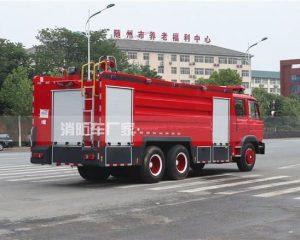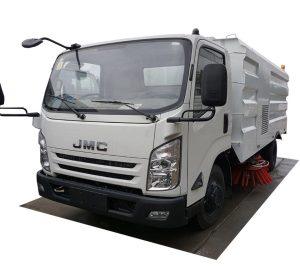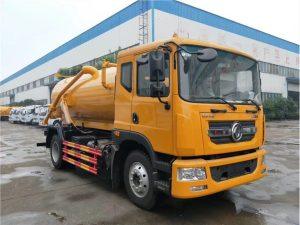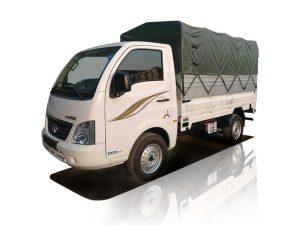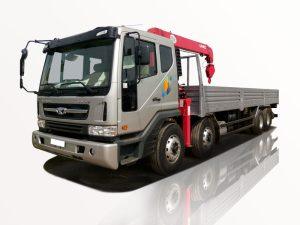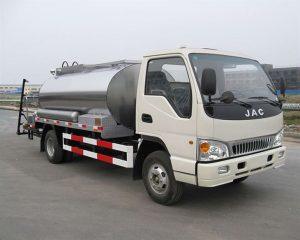Monday to Saturday - 8:00 -17:30
How Do Garbage Trucks Work: A Complete Guide
Introduction
Garbage trucks are an essential part of modern waste management systems. They assist communities in keeping the environment clean by collecting and transporting waste to appropriate disposal sites. Understanding how garbage trucks work can help you appreciate the mechanics behind these vehicles and their vital role in our daily lives. This article dives into the inner workings of garbage trucks, exploring their types, mechanisms, and operational processes, while also providing practical tips for efficient waste disposal.
The Evolution of Garbage Trucks
Garbage trucks have come a long way since their inception in the late 19th century. Initially, waste was collected manually, which was labor-intensive and inefficient. Today’s garbage trucks are equipped with advanced technology and engineering that streamline the waste collection process.
The History of Waste Collection Vehicles
In the early days, wagons or carts were used to transport garbage. The first motorized garbage truck was introduced in the 1910s, marking a significant advancement. The introduction of hydraulic lifts in the 1930s revolutionized garbage collection and set the stage for the modern vehicles we see today.
Impact of Technology
Modern garbage trucks use sophisticated technology that allows for automated operations, enhanced safety features, and improved efficiency. This shift has made waste collection easier for both operators and communities as a whole.
Types of Garbage Trucks
Garbage trucks come in various types, each designed for specific waste collection tasks. Understanding the different types will provide insight into how they operate and the roles they play in waste management.
Rear Loader Trucks
Rear loader trucks are the most common type used in residential areas. They feature a large opening in the back where waste is loaded.
- Suitable for: Residential waste collection
- Collection method: Manual or automated using hydraulic arms
Front Loader Trucks
Front loader trucks are primarily used for commercial waste collection. They have forks in the front that lift dumpsters and dump their contents into the truck.
- Suitable for: Commercial establishments
- Collection method: Automated via hydraulic systems
Side Loader Trucks
These trucks feature a compartment on the side for waste collection. They are often equipped with robotic arms that can pick up bins from the curb.
- Suitable for: Areas with limited space, such as tight streets
- Collection method: Automated or manual
Compactors
Compactor trucks are used for high-volume waste collection. These trucks compact the waste as it is collected, allowing for more storage volume.
- Suitable for: Industrial waste or large commercial operations
- Collection method: Automated compaction process
How Garbage Trucks Operate
The operation of garbage trucks involves several stages, from collection to transportation. Let’s take a closer look at how these processes work.
Preparation for Collection
Before the garbage truck heads out, several preparatory steps are involved:
- Route Planning: Efficiency is key, so routes are planned to minimize travel time and fuel consumption.
- Driver Training: Operators are trained to safely operate both the vehicle and the machinery involved.
Collection Process
The collection process can vary based on the type of truck being used. Here’s a breakdown:
Manual Collection
For rear loaders, workers may need to manually pick up bags and bins and throw them into the truck’s opening. This requires physical labor and coordination.
Automated Collection
In automated systems, the truck uses hydraulic arms to lift and empty bins into the truck. This reduces physical strain on workers and speeds up the collection process.
Compaction and Storage
As garbage is collected, it is compacted to maximize space within the truck. The compaction mechanism not only increases storage but also reduces the number of trips required to disposal sites.
Transportation
Once the truck is full, it transports the waste to designated landfills or waste processing facilities. During transportation, the trucks must adhere to various safety regulations to prevent spillage and ensure environmental protection.
Maintenance of Garbage Trucks
Garbage trucks are complex machines that require regular maintenance to operate efficiently. Neglecting maintenance can lead to costly repairs and downtime.
Routine Maintenance Checklists
| Maintenance Task | Frequency | Details |
|---|---|---|
| Oil Changes | Every 3,000-5,000 miles | Ensure engine longevity and efficiency. |
| Tire Inspections | Monthly | Check for wear and proper pressure. |
| Brake Checks | Every 10,000 miles | Vital for safety; replace pads as needed. |
| Hydraulic System Inspections | Monthly | Check for leaks and fluid levels. |
Common Repairs
Common repairs include hydraulic system fixes, brake replacements, and engine repairs. Having a professional maintenance team can help prolong the life of the truck.
Environmental Impact and Regulations
Garbage trucks play a crucial role in waste management, but they also have an environmental footprint. Understanding this impact can help communities adopt better practices.
Emission Standards
In many regions, garbage trucks must comply with strict emission standards to minimize their environmental impact. This includes implementing systems to reduce greenhouse gases and manage waste more effectively.
Recycling and Waste Diversion
As part of a comprehensive waste management strategy, garbage trucks are often involved in recycling programs that divert tons of waste from landfills. Communities can benefit from educational programs that encourage recycling.
Innovative Waste Management Practices
Many municipalities are exploring innovative approaches to waste management, such as waste-to-energy systems that convert disposed items into energy. Such initiatives require advanced garbage trucks and a commitment to sustainable practices.
Practical Tips for Effective Waste Disposal
Successful waste management requires teamwork between garbage collectors and the communities they serve. Here are some practical tips to promote effective waste disposal:
Understanding Local Regulations
Familiarize yourself with your community’s waste disposal rules, including collection schedules, prohibited items, and recycling guidelines. This knowledge will ensure you play your part in efficient waste management.
Proper Sorting of Waste
Sort your waste into recyclables, organics, and general waste to facilitate easier collection and processing. Make it a habit to use different bins for each type of waste.
Reducing Waste Generation
Adopt practices that minimize waste generation, such as using reusable bags and containers, composting food scraps, and purchasing items with less packaging.
Community Engagement
Participate in community clean-up events and educational sessions that promote sustainable waste practices. Working together enhances community spirit and environmental stewardship.
Frequently Asked Questions (FAQ)
1. How often do garbage trucks pick up waste in residential areas?
Most residential areas have scheduled pickups once a week, though this can vary based on city regulations and population density.
2. What happens to the waste collected by garbage trucks?
After collection, waste is transported to landfills, recycling centers, or waste-to-energy facilities, depending on its type and local waste management policies.
3. Can I put hazardous materials in my garbage bin?
No, hazardous materials such as batteries, chemicals, and electronics should not be placed in regular garbage bins. Check local guidelines for proper disposal methods.
4. How do garbage trucks avoid roadside accidents?
Most garbage trucks are equipped with safety features like reflective tape, backup cameras, and alarms to enhance visibility and prevent accidents.
5. Why do garbage trucks have different sizes?
Garbage trucks come in different sizes to accommodate various types of waste collection needs, including residential, commercial, and industrial scenarios.
6. Are garbage trucks environmentally friendly?
While garbage trucks do contribute to emissions, many municipalities are transitioning to more environmentally friendly models and implementing recycling initiatives to mitigate their impact.


